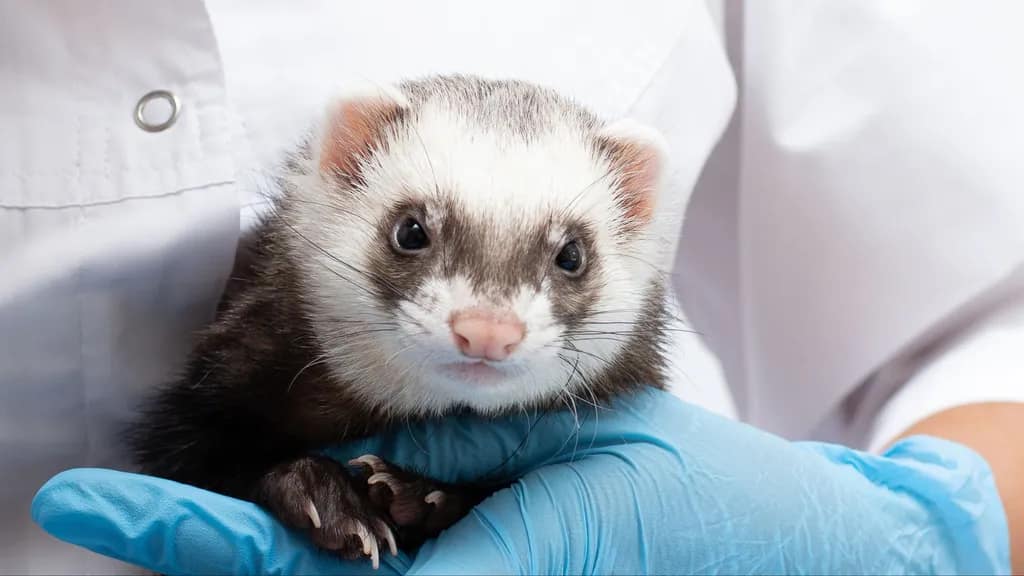Rising H5N1 bird flu cases in the U.S. prompted the CDC to study the virus in ferrets, revealing it may have the potential to spread and cause severe symptoms in other mammals.
According to Centers for Disease Control and Prevention (CDC) research, H5N1 avian flu is improving its ability to travel across mammals, but it is still not as contagious as seasonal flu.
This year, at least 46 Americans have been found to have H5N1, which has so far only caused minor infections. Although scientists have investigated if the avian virus has evolved to infect mammals as a precaution, the CDC says that the virus currently offers minimal risk to the general populace.
Cattle are among the approximately 50 animal species in which H5N1 has been found. How well the avian virus infects mammals and how quickly it spreads to other species, such as humans, are the questions at hand. Although they haven’t discovered any instances of human-to-human transmission in the continuing outbreak, experts are keeping an eye out for any indications.
Because ferrets are vulnerable to human influenza and exhibit comparable symptoms, the CDC utilized them in the current study, which was published on October 28 in the journal Nature.
“They have been used as a model system to study airborne transmission because they expel virus into the air,” explained Seema Lakdawala, an influenza virologist at Emory University who works with the CDC on other projects but was not involved in the study. According to Lakdawala, the location of receptors in human and ferret lungs allows the virus to penetrate cells.
According to the study, H5N1 may travel quickly between ferrets in some situations, which raises the possibility that it could spread to other animals.
According to Troy Sutton, a veterinary researcher at Penn State who was not involved in the study, just because the virus spreads in ferrets does not imply that it will spread in people. Instead, he explained, it indicates that the virus could be becoming more adept at spreading across animals.
Deadly disease
An H5N1 virus obtained from a dairy farmworker in Texas who had one of the first human cases this year was utilized by the CDC researchers. Sutton told Live Science that this virus carried a mutation known as E627K, which has been connected to the flu pandemics that occurred in 1918, 1957, and 1968.
Sutton stated that E627K alters a protein that aids in viral replication, making it more effective at lower temperatures. This mutation aids in the spread of bird flu viruses to humans since human body temperatures are typically a few degrees Celsius lower than those of birds.
According to Lakdawala, surveillance has not discovered any other instances of this mutation in either humans or animals. However, in case it resurfaces, the CDC has researched its effects on ferrets.
Ferrets that had H5N1 injected straight into their noses experienced severe symptoms, including fever, diarrhea, and breathing difficulties. In some cases, the animals even perished. In contrast, infections among Americans have been rather mild, exhibiting only moderate symptoms such as redness of the eyes.
One explanation might be that the ferrets were given millions of virus particles, which is common technique for ferret flu investigations, according to Sutton.

“It is most likely higher than what one would get from being around someone who has human influenza,” he added. He did note, however, that farmworkers can be exposed to larger doses of the virus because a milliliter of unpasteurized cow milk might contain 100 times more virus than the ferrets were given.
While the ferrets in this study were raised on farms free of virus, humans are also somewhat protected by previous immunity to comparable flu strains. Lakdawala discovered that ferrets that are immune to the 2009 H1N1 virus, commonly referred to as “swine flu,” also exhibit some immunity to H5N1 in a study that has not yet undergone peer review.
Efficient transmission
The virus’s mode of transmission among farmworkers is unknown to scientists. Direct animal handling, airborne transmission, or contact with infected surfaces—such as milking equipment—could all be contributing factors. In ferrets, the CDC investigated all three options.
They investigated direct contact by placing an infected ferret in the same cage as a healthy ferret. “Ferrets are gregarious creatures. They cuddle and nuzzle one another,” Lakdawala remarked. After testing three ferret couples for direct contact, they discovered that each incidence resulted in transmission and serious illness.
The researchers investigated transmission from contaminated surfaces, including cage walls, bedding, food, and water, by relocating a healthy ferret to a cage that had previously housed an ill one. They put healthy and infected ferrets in cages next to each other, separated by a wall that was perforated to let airborne viruses in, to test for airborne dissemination. A portion of the ferrets remained uninfected, indicating that neither of these transmission methods was as effective as direct contact.
This study sheds light on the possible severity and spread of H5N1. Lakdawala pointed out that these cage tests don’t evaluate the likelihood of transmission across both short and long distances, nor do they take into consideration the intricacies of human behavior or the human immune system.
According to her, it would be crucial to examine H5N1 viruses obtained from different human patients to see whether the virus’s behavior varies in tandem with its genetic makeup.